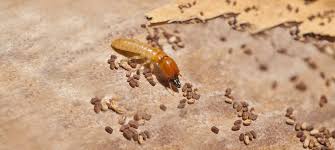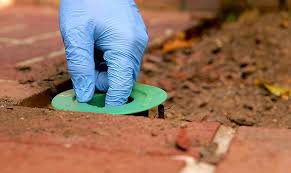Getting My Termite Control Use To Work
After a termite inspection was carried out, pest control specialists can recommend a best plan of action to remove present termites and prevent future infestation. Usually, some form of chemical treatment will probably be recommended. Termites treatments include temporary chemical programs, baits, traps as well as structural and physical barriers.
In many cases, this will be all it takes to eliminate an entire colony of termites. You may be in danger of infestation, if you begin with termite baiting. Termites may have a community of tunnels they travel through to reach a nest up.
The magnitude of also the management procedure and your problem necessary to solve it will affect.
Termite Control Using Neem Tree Fundamentals Explained
Termite treatment using polyurethane, dust or a spray can cost $ and between $ 3 30 6 60 based on the extent of the damage.
Therapy is the longest lasting method to keep termites from your home. This may cost between $2 500 and $3 500, but won't have to be repeated.
Expect to cover the area of 2 50 for a pest inspection, and $300-$600 for a combined building and pest inspection.
Termite Control Use for Beginners
Be sure to check what they include within their services before you hire a neighborhood pest control specialist.
Be as comprehensive as possible in describing the type or kinds of pests you have and the level of the problem. If there are access difficulties, mention these, too. This way you will receive more accurate quotes. If youre hiring a termite control service guarantee their treatment program is compliant with Australian Standard AS 36 60.
Most services will offer a money-back guarantee. Also check your pest management service is licensed and qualified to operate in your property. .

Rumored Buzz on Termite Control Using Neem Tree
Termites serve an important ecologicalfunction by converting trees to matter and consume cellulose and timber in natural bush land. Regrettably from the surroundings, thewood in buildings and other constructions like wooden electricity poles and bridges is equallyappealing to termites and infestation may cause considerable harm.

Management of termites, and eradication of exotic species isalso expensive a campaign to eliminate West Indian dry wood termite Cryptotermes brevis (Walker)in Queensland is estimated to have cost $4.2 million by 199 8 (Peters and Fitzgerald, 199 8).Worldwide, damage caused by termites is projected at U.S $2 2 billion per annum in terms of Urban cities & termite attack Environment 2 3Â damage to wooden structures (Fage et al., 198 8). .
Prevention and treatment of termite damage in Australian cities is therefore needed, and might give rise to unwanted side effects. Until 199 5, organochlorine termiticide treatments were used to create barriers to termites in Australia. These have been replaced with other, less persistent, chemicals and physicalbarriers. As a result, chemical termiticides will need to be reapplied on a regular basis, averagingevery 3 to 5 years depending on local requirements.
10 Simple Techniques For Termite Control Use
In 200 5, bifenthrin (FMC Australasia Pty Ltd) is the most commonly used termiticide in Australia followed by imidacloprid and fipronil. Chlorpyrifos (Dow Agricultural Products) has decreased in usage due to concerns over toxicity and efficacy in alkaline soils. Permethrin, alpha-cypermethrin aren't now used although they stay registered for use in Australia from the National Registration Authority (NRA). .
Australias termite fauna is diverse, represented by five families (Mastotermitidae, Termopsidae,Kalotermitidae, Rhinotermitidae and Termitidae) containing 40 known genera and more than 26 6described species. Termites play http://innovativepestcontroladelaide.com.au/ an integral role in the nutrient cycles of tropical ecosystems (Whitford,199 1). Termites might be grouped as wood, dry wood or underground, based on theirhabits.
